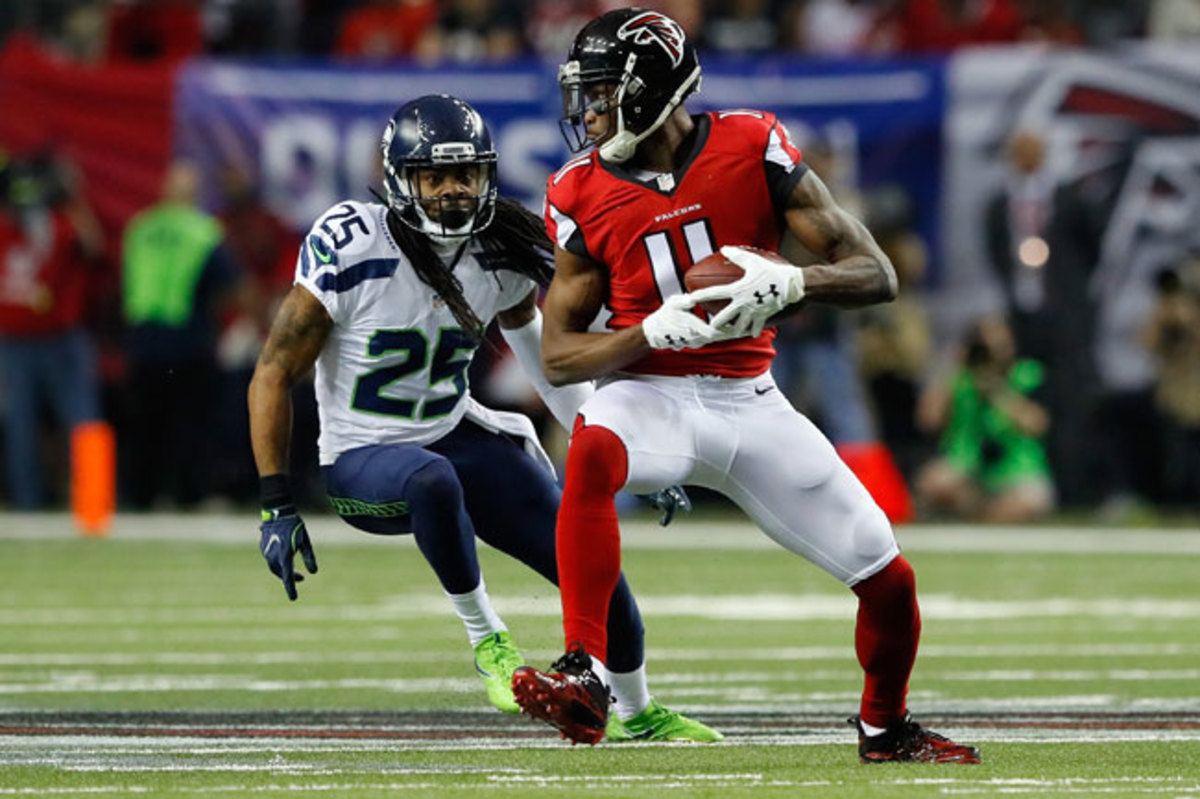Is Richard Sherman on the Decline?

If Richard Sherman stays on the path he was on in 2016, then 2017 will be his last season in Seattle. That is, if 2016 wasn’t already his last with the Seahawks. GM John Schneider and coach Pete Carroll have publicly acknowledged that they’re listening to trade offers for the 28-year-old cornerback. Contrary to popular belief, this has little to do with Sherman’s volatility, which last season resurfaced after a multiyear hiatus and took the form of sideline outbursts, media spats and public criticism of offensive coordinator Darrell Bevell. These blemishes didn’t help Sherman’s image, of course, but what is really diminishing his value is his apparent decline in physical ability.
Sherman struggled with change-of-direction last year. When forced to swivel his hips and follow a receiver breaking out on a corner route or, especially, breaking in on a slant, he often allowed too much separation. In-breaking patterns have always posed challenges for the angular Sherman, but 2016 was the first time they consistently posed problems.
• PETER KING: Tony Romo’s New Job is ‘Dangerous’
Nothing can harm a defense faster than a corner with an explicit weakness. The cornerback position is 100 percent reactionary; offenses can always attack it. In and of itself, Sherman’s trouble with changing directions isn’t enough to warrant the Seahawks letting him go. But it might be when you consider that in 2018, the final year of Sherman’s contract, his cap number will be $13.2 million. The dead-money price of cutting him would be only $2.2 million.
The question is whether Sherman’s change-of-direction struggles were symptoms of an early decline in athletic ability or just an aberration. When age starts to impact an athlete, it’s often his balance that goes first. Balance is a big part of change-of-direction. But remember, Sherman also played with an undisclosed MCL injury in 2016. That would also impact a corner’s change-of-direction.

Trading Sherman for equal value is tricky because he’s more important to the Seahawks than he’d be to many other NFL teams. He’s a perfect fit for Seattle’s foundational Cover 3 zone defense. One of the most important aspects of playing Cover 3 is having outside corners who don’t get beat deep. No corner over the past five years has been better against outside vertical routes than Sherman.
Many believe lankiness is the key trait for corners in Seattle’s scheme, but even higher on the priority list is a corner’s ball-tracking ability. Sherman, a former Stanford wide receiver, is still sensational when the ball is floating through the air. This is particularly true when he’s closer to the sideline, where his physicality becomes a bigger plus.
There’s a complicating factor for Sherman, however: In obvious passing situations, the Seahawks, like many Cover 3 teams across the NFL (most notably Dan Quinn’s Falcons), are gradually playing less Cover 3 and more man-to-man. Sherman can thrive in man coverage against possession receivers because of his physicality, but the rule books limits the extent of that. And quicker receivers are still an issue. In man coverage a corner can’t avoid having to make sudden changes in direction.
If Sherman is still a Seahawk on May 1, after the draft’s completion, then he’s probably in the clear for this season. Then again, what if, when minicamp, or even training camp, rolls around, it’s apparent that his decline is continuing? Because the Seahawks would see this before the rest of the NFL, Sherman’s trade value would still be at its high point. (A high point that, granted, would likely be lower than it had been earlier in the offseason.) Schneider and Carroll might then have an interesting decision to make.
Question? Comment? Let us know at talkback@themmqb.com
